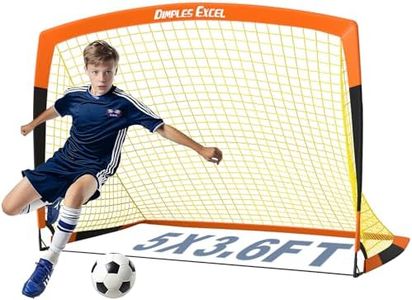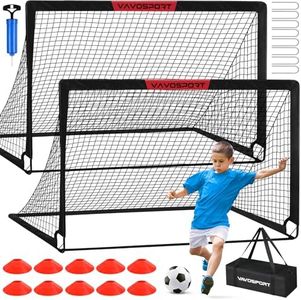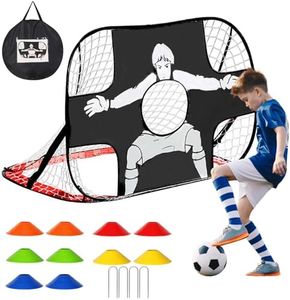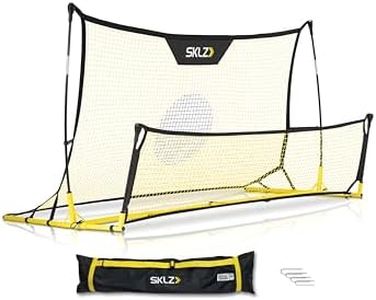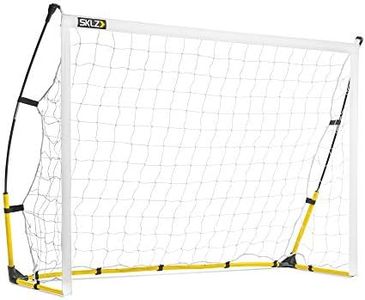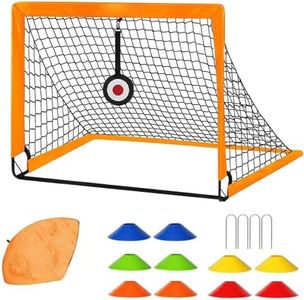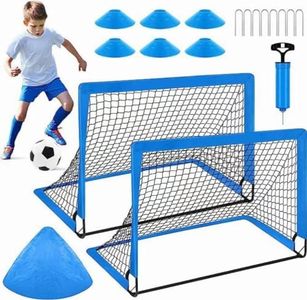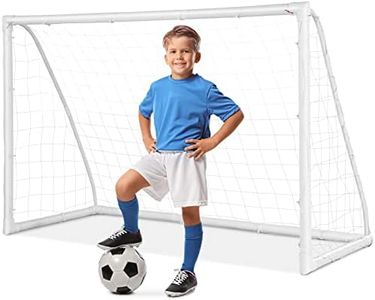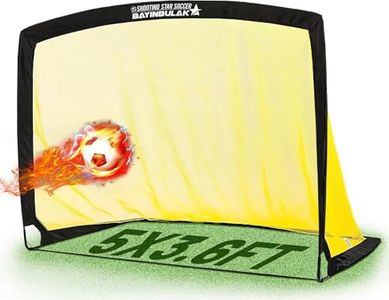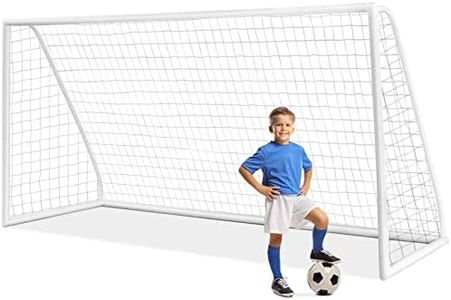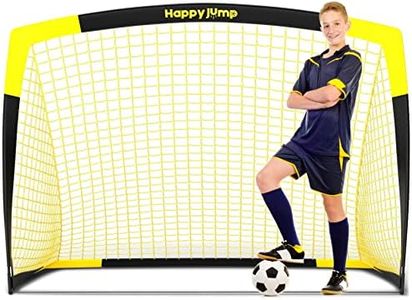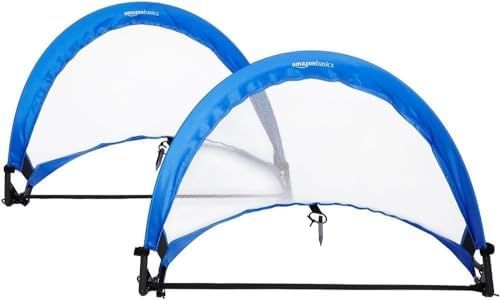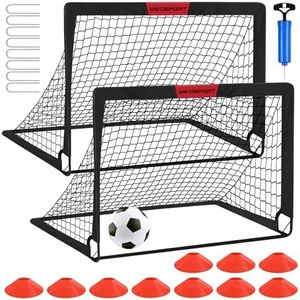We Use CookiesWe use cookies to enhance the security, performance,
functionality and for analytical and promotional activities. By continuing to browse this site you
are agreeing to our privacy policy
10 Best Kids Soccer Goals
From leading brands and best sellers available on the web.Buying Guide for the Best Kids Soccer Goals
Choosing the right kids' soccer goal can make playtime safer and more enjoyable, while helping young players develop their soccer skills. Before you buy, think about where you'll be using the goal (like in the backyard, at the park, or indoors), as well as your child's age, playing ability, and what you want them to get out of their soccer practice. The right goal should be sturdy, the right size for your space and their age, safe to use, and easy to set up and move around.SizeSize refers to the dimensions of the soccer goal. It's important because children need a goal that's appropriate for their age and playing level—too big can be intimidating and unsafe, too small might not be challenging. Mini goals (around 2 to 4 feet wide) are best for toddlers and very young children, helping with basic kicking skills. Medium sizes (around 4 to 6 feet wide) suit most elementary-aged kids for casual backyard play. Full kid-sized goals (up to 12 feet wide) are for older kids or those looking to play more serious matches, often used in youth leagues. Match the goal size to your child’s age, skill level, and the space available.
MaterialThe material of the frame and net determines how durable and safe the soccer goal is. Goals can be made from plastic, steel, or aluminum, each having different strengths. Plastic goals are lightweight and safe for the youngest kids, but might not last as long if used roughly. Steel frames offer more durability and stability for frequent play, but can be heavier to move. Aluminum is light and strong, ideal for portable, higher-quality youth goals. Net material matters too—look for tough nylon or polyester for longer-lasting use. Choose a material that balances safety, weight, and where the goal will be used.
PortabilityPortability means how easy it is to move, fold, or disassemble the soccer goal. If you need to set up and take down the goal often, or want to take it to parks or friends’ houses, a portable option is important. Quick-folding goals and pop-up styles are excellent for convenience and storage, though they may be less sturdy. Heavier, fixed goals are better for permanent backyard setups. Think about whether you'll need to move the goal frequently and choose accordingly.
Stability and AnchoringStability is crucial for safety; an unstable goal can tip and injure children. Many goals come with ground stakes, pegs, or sandbag pockets to secure them. Lightweight goals are more likely to move with strong shots, so check that anchoring systems are effective. For soft ground, metal stakes work well. For harder surfaces, sandbags can help. Always consider how the goal will be used and ensure it can be safely anchored in your playing area.
AssemblyAssembly refers to how easy and quick it is to set up and take down the soccer goal. For busy parents or coaches, an easy assembly means play can start sooner. Some goals pop up instantly, while others need parts connected with tools. Complex assemblies might be sturdier, but could be frustrating if you’ll need frequent setup. Consider who will be assembling the goal and how often it will need to be set up or moved.
Safety FeaturesSafety features include rounded edges, strong netting, and secure frames to prevent injuries. For younger kids, especially, look for goals with soft corners and flexible poles. The net should attach firmly to prevent balls or hands from getting caught. If the goal will be used by older or more aggressive players, sturdier frames and a reliable anchoring system are critical. Always prioritize safety, especially for unsupervised play.
